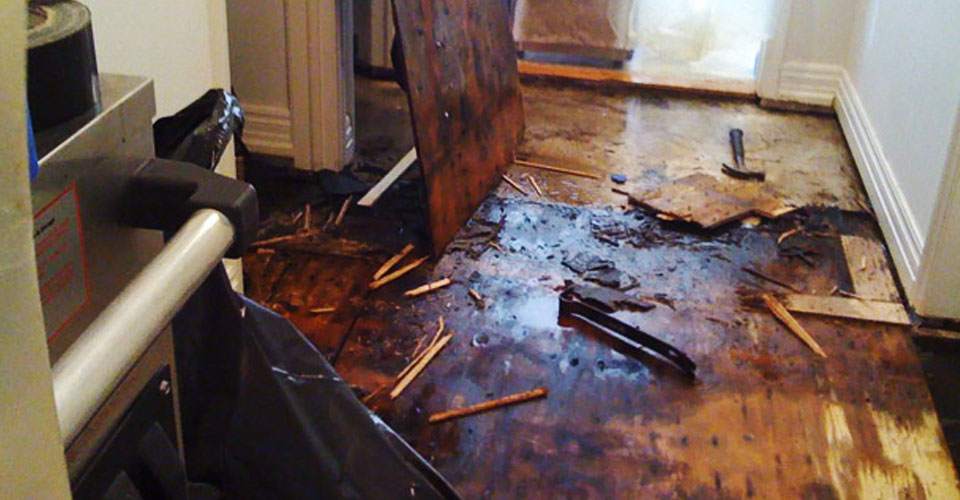Do's & Don'ts of Water Restoration.
Do's & Don'ts of Water Restoration.
Blog Article
Just how do you feel in relation to Ways to Reduce The Risk Of Fire And Water Damage?

Water offers life, water invasion on parts where it's not intended to be can result in damages. It can peel off away surface areas as well as erode the foundation if the water saturates into your structure. Mold and mildew as well as mildew also thrive in a wet atmosphere, which can be dangerous for your health. Homes with water damages odor stuffy and also old.
Water can come from many resources such as hurricanes, floods, ruptured pipes, leakages, as well as sewage system problems. In case you experience water damage, it would be excellent to understand some safety preventative measures. Here are a couple of guidelines on just how to handle water damage.
Do Prioritize House Insurance Protection
Water damages from flood because of heavy winds is seasonal. Nonetheless, you can also experience an abrupt flooding when a faulty pipeline unexpectedly bursts right into your residence. It would be best to have residence insurance policy that covers both acts of God such as all-natural disasters, and also emergencies like damaged plumbing.
Don't Fail To Remember to Switch Off Utilities
In case of a disaster, specifically if you reside in a flood-prone location, it would be a good idea to switch off the main electrical circuit. This removes power to your entire house, preventing electrical shocks when water can be found in as it is a conductor. Furthermore, do not neglect to shut off the major water line shutoff. When floodwaters are high, furnishings will move as well as create damages. Having the main shutoff turned off prevents more damages.
Do Stay Proactive and also Heed Climate Signals
Pay attention to emptying warnings if you live near a lake, creek, or river . Doing so reduces possible home damage.
Do Not Neglect the Roof
Before the weather condition transforms frightful, see to it you have a roof evaluation. It would certainly be prudent to receive this solution yearly as it can minimize complex concerns. If there are no openings and also leakages in your roof, you can prevent rainfall damages. Your roofing professional will certainly also deal with faulty rain gutters or any other indications of weakening. This will certainly avoid water from streaming down your walls as well as saturating your ceiling.
Do Pay Attention to Small Leakages
A ruptured pipeline does not take place over night. You may discover bubbling paint, peeling wallpaper, water touches, water discolorations, or leaking noises behind the walls. Have your plumbing fixed before it results in large damage.
Don't Panic in Case of a Ruptured Pipe
Keeping your presence of mind is vital in a time of situation. Worrying will just intensify the problem due to the fact that it will stifle you from acting quick. Timing is key when it comes to water damage. The longer you wait, the even more damage you can anticipate. Therefore, if a pipeline bursts in your home, immediately shut down your main water valve to remove the source. Then disconnect all electrical outlets in the location or switch off the circuit breaker for that part of your house. Call a credible water damage remediation specialist for aid.
Water offers life, water invasion on components where it's not expected to be can result in damages. Homes with water damages scent moldy and old.
Water damage from flood dues to hefty winds is seasonal. You may discover bubbling paint, peeling off wallpaper, water streaks, water stains, or leaking noises behind the walls. When it comes to water damages, timing is vital.
Some Do's & Don't When Dealing with a Water Damage
DO:
Make sure the water source has been eliminated. Contact a plumber if needed. Turn off circuit breakers supplying electricity to wet areas and unplug any electronics that are on wet carpet or surfaces Remove small furniture items Remove as much excess water as possible by mopping or blotting; Use WHITE towels to blot wet carpeting Wipe water from wooden furniture after removing anything on it Remove and prop up wet upholstery cushions for even drying (check for any bleeding) Pin up curtains or furniture skirts if needed Place aluminum foil, saucers or wood blocks between furniture legs and wet carpet Turn on air conditioning for maximum drying in winter and open windows in the summer Open any drawers and cabinets affected for complete drying but do not force them open Remove any valuable art objects or paintings to a safe, dry place Open any suitcases or luggage that may have been affected to dry, preferably in sunlight Hang any fur or leather goods to dry at room temperature Punch small holes in sagging ceilings to relieve trapped water (don't forget to place pans beneath!); however, if the ceiling is sagging extremely low, stay out of the room and we'll take care of it DO NOT:
Leave wet fabrics in place; dry them as soon as possible Leave books, magazines or any other colored items on wet carpets or floor Use your household vacuum to remove water Use TV's or other electronics/appliances while standing on wet carpets or floors; especially not on wet concrete floors Turn on ceiling fixtures if the ceiling is wet Turn your heat up, unless instructed otherwise

We are very interested by What You Can Do At Home To Prevent Fire And Water Damage and I really hope you enjoyed the post. Appreciated our posting? Please share it. Let somebody else check it out. We appreciate reading our article about Keeping Your Home Safe This Holiday Season.
Report this page